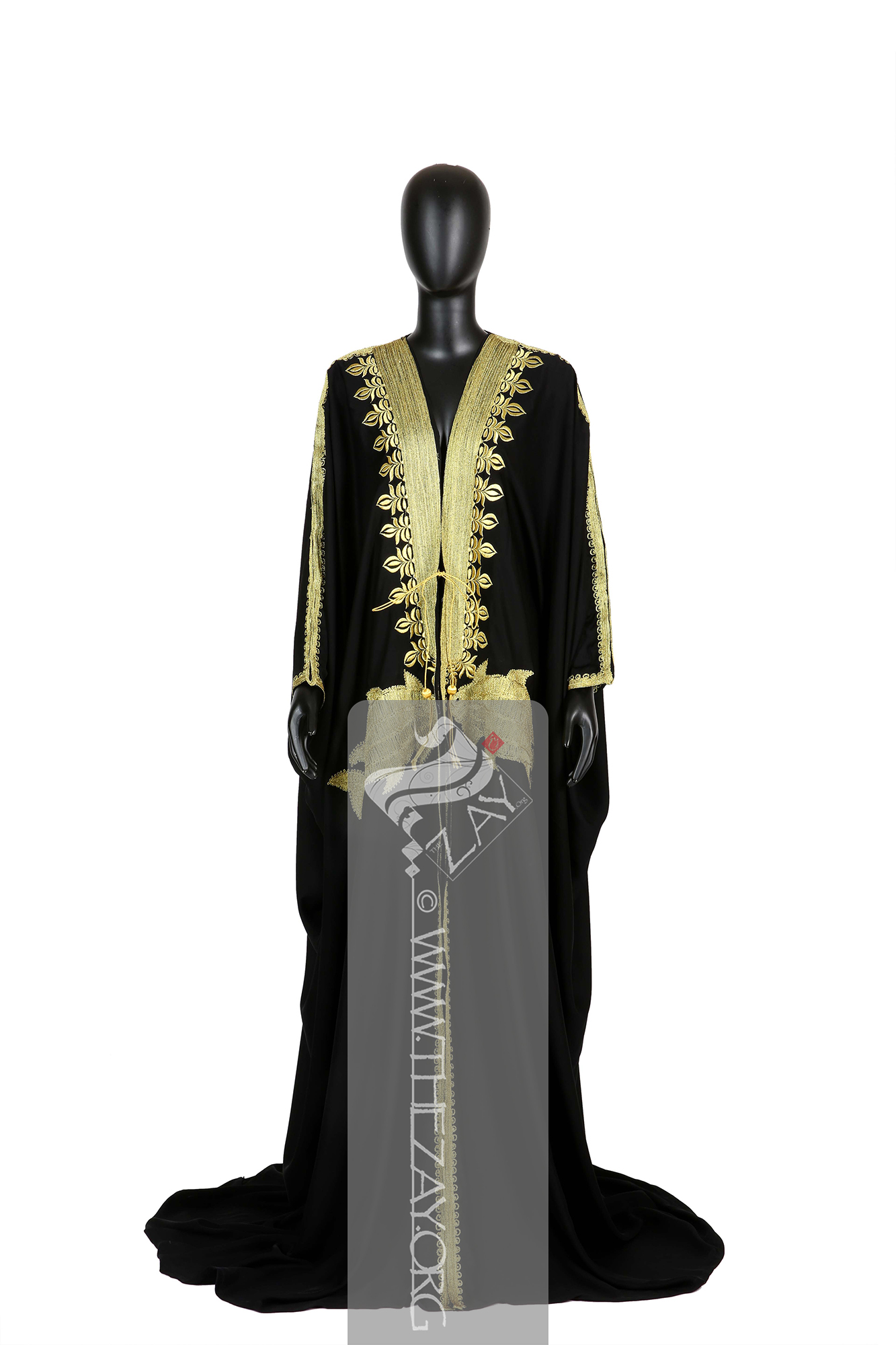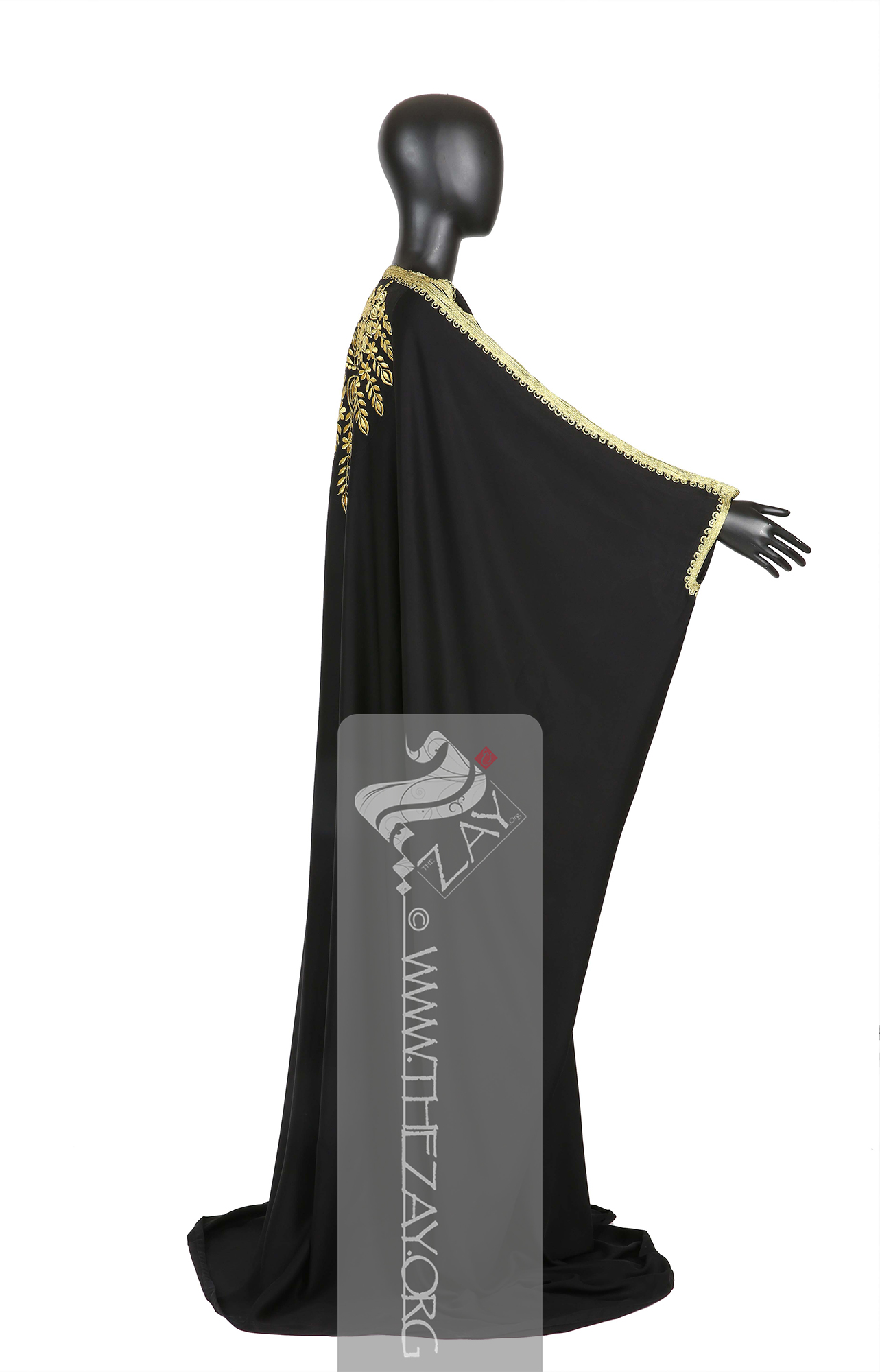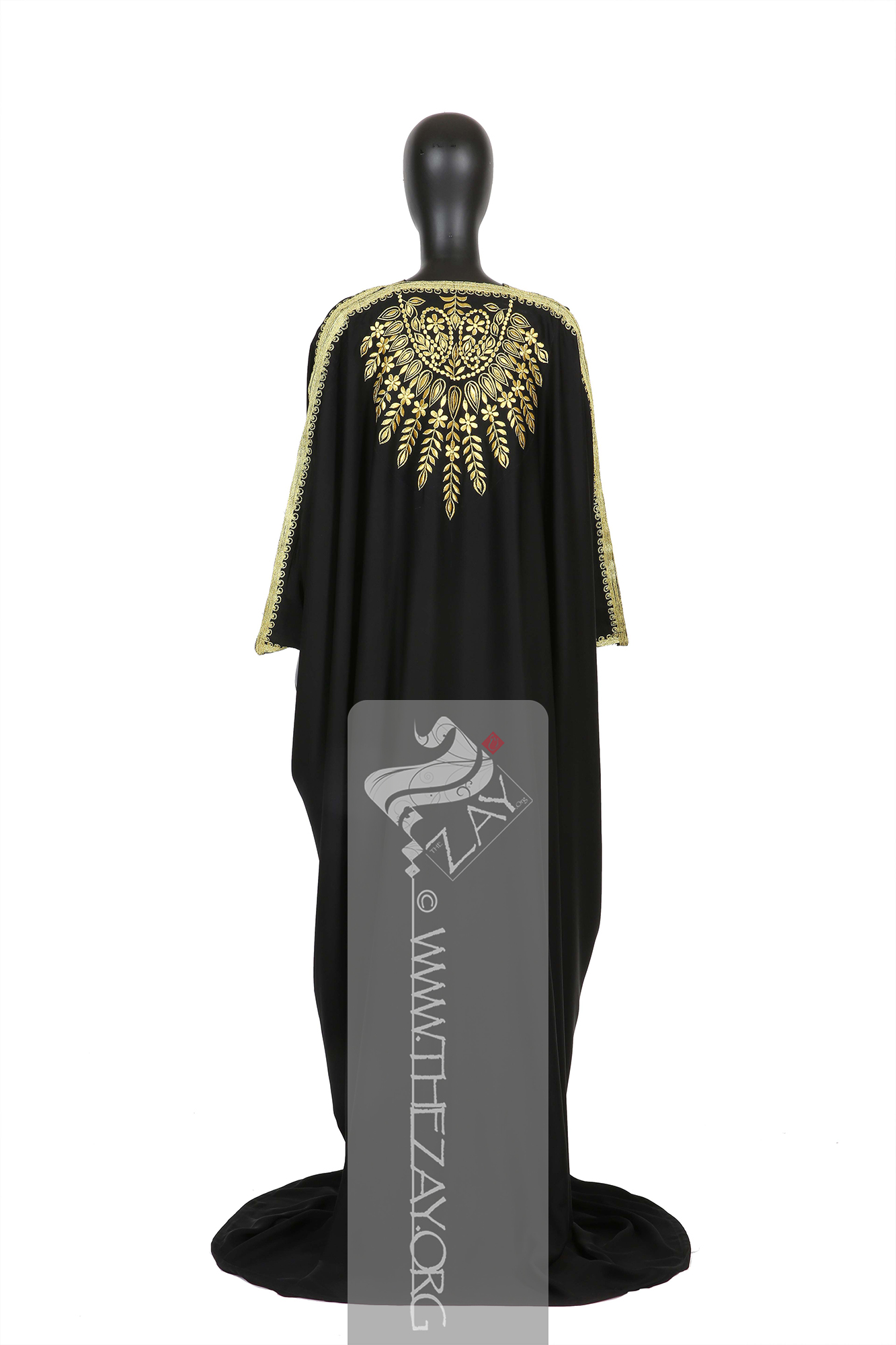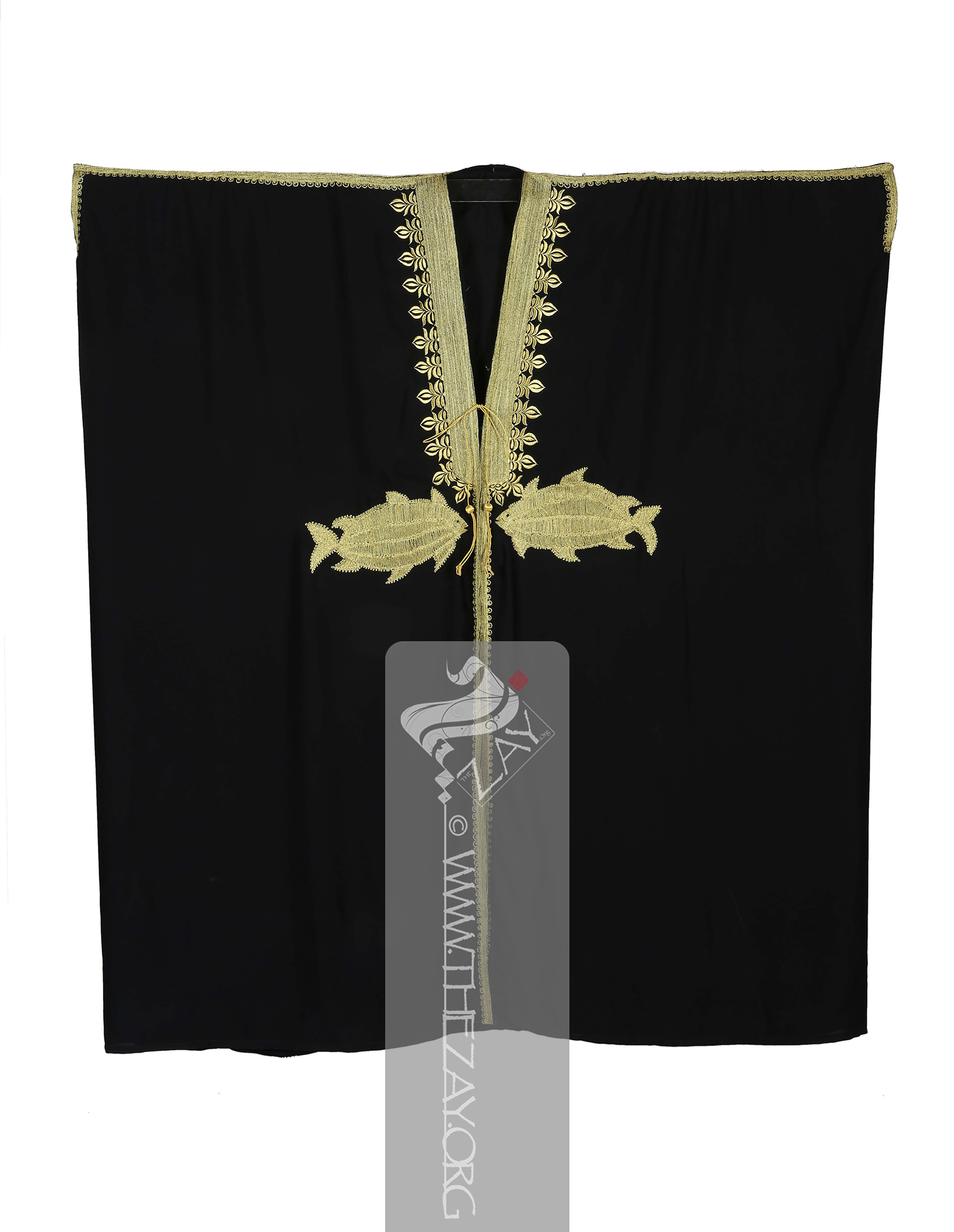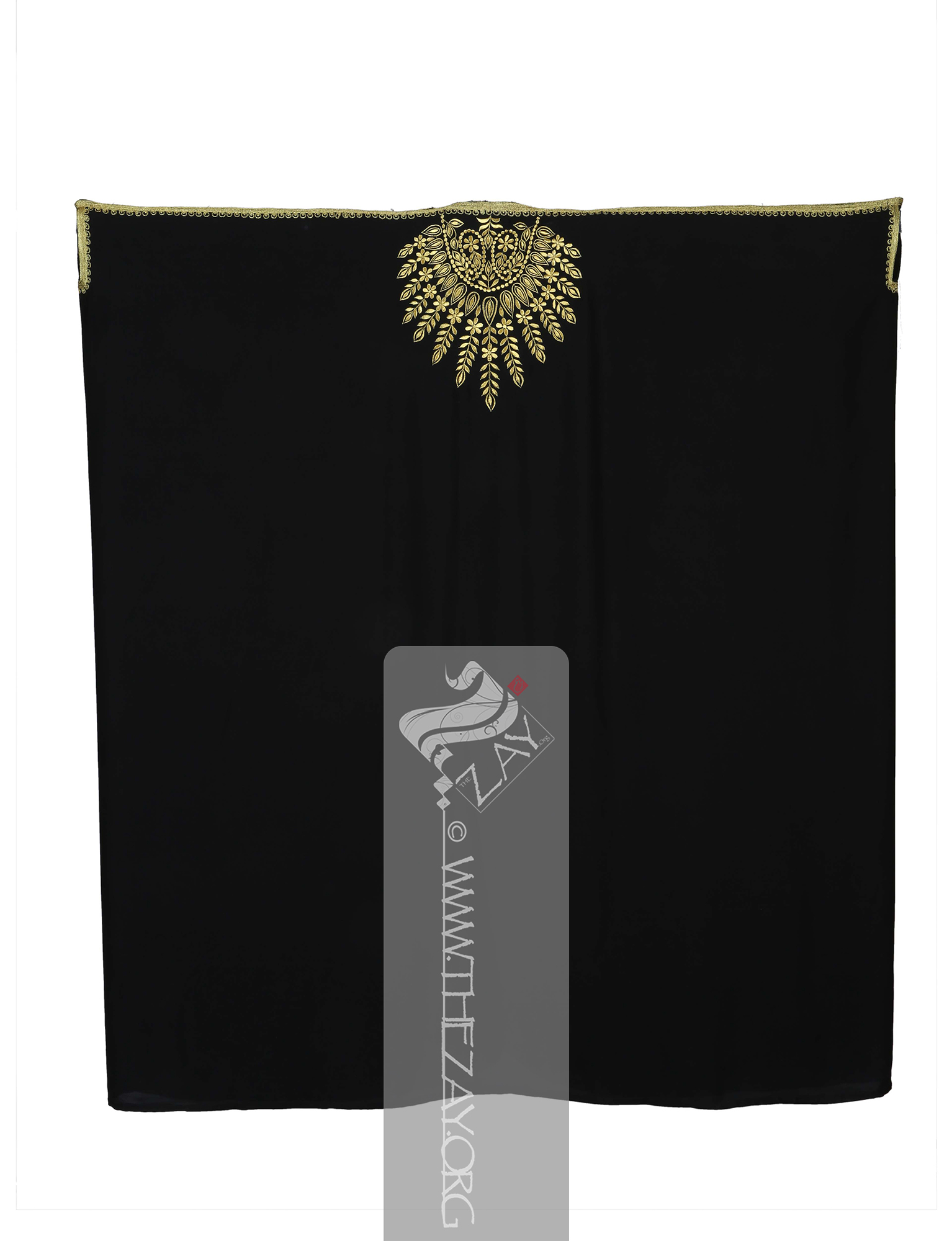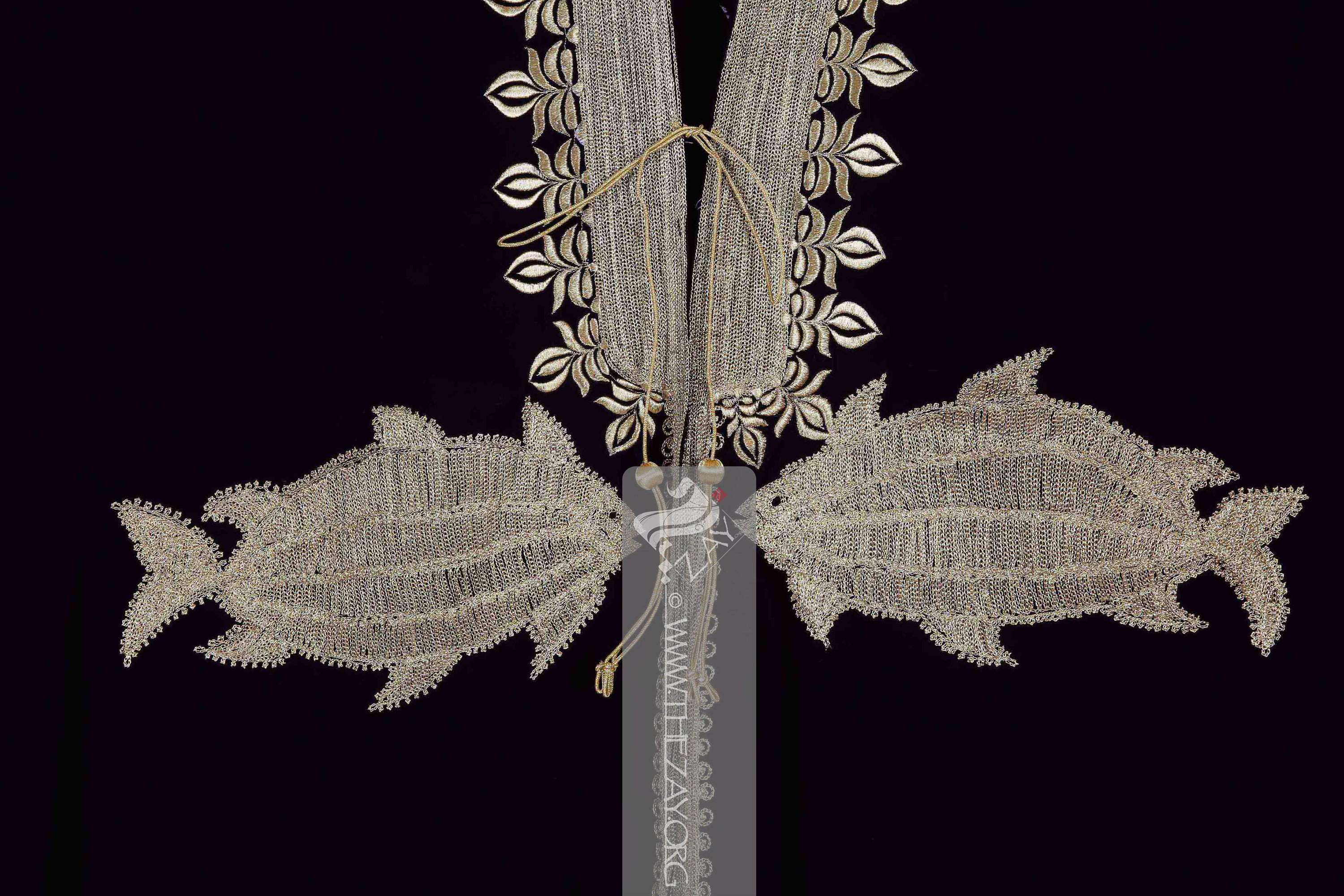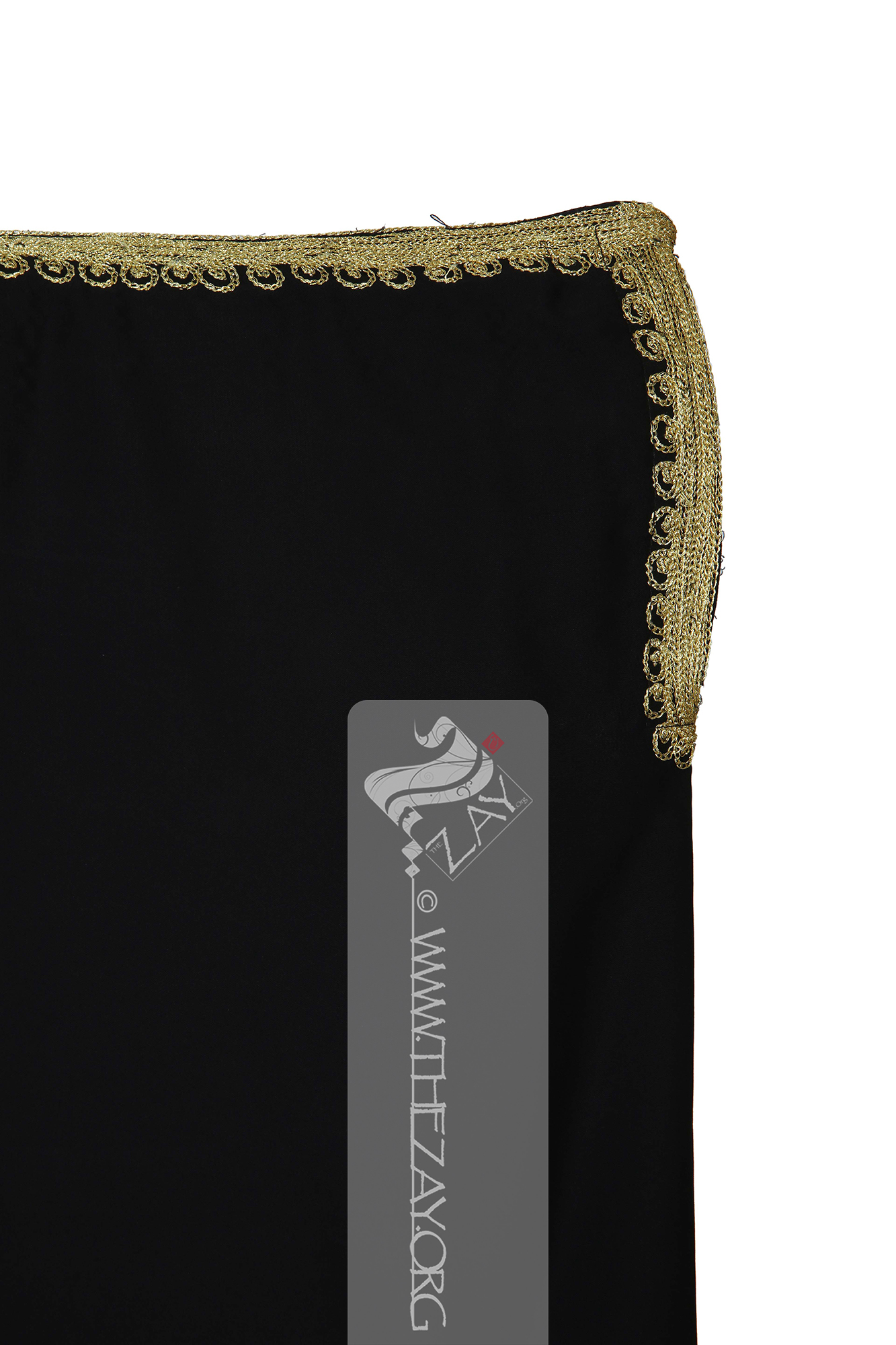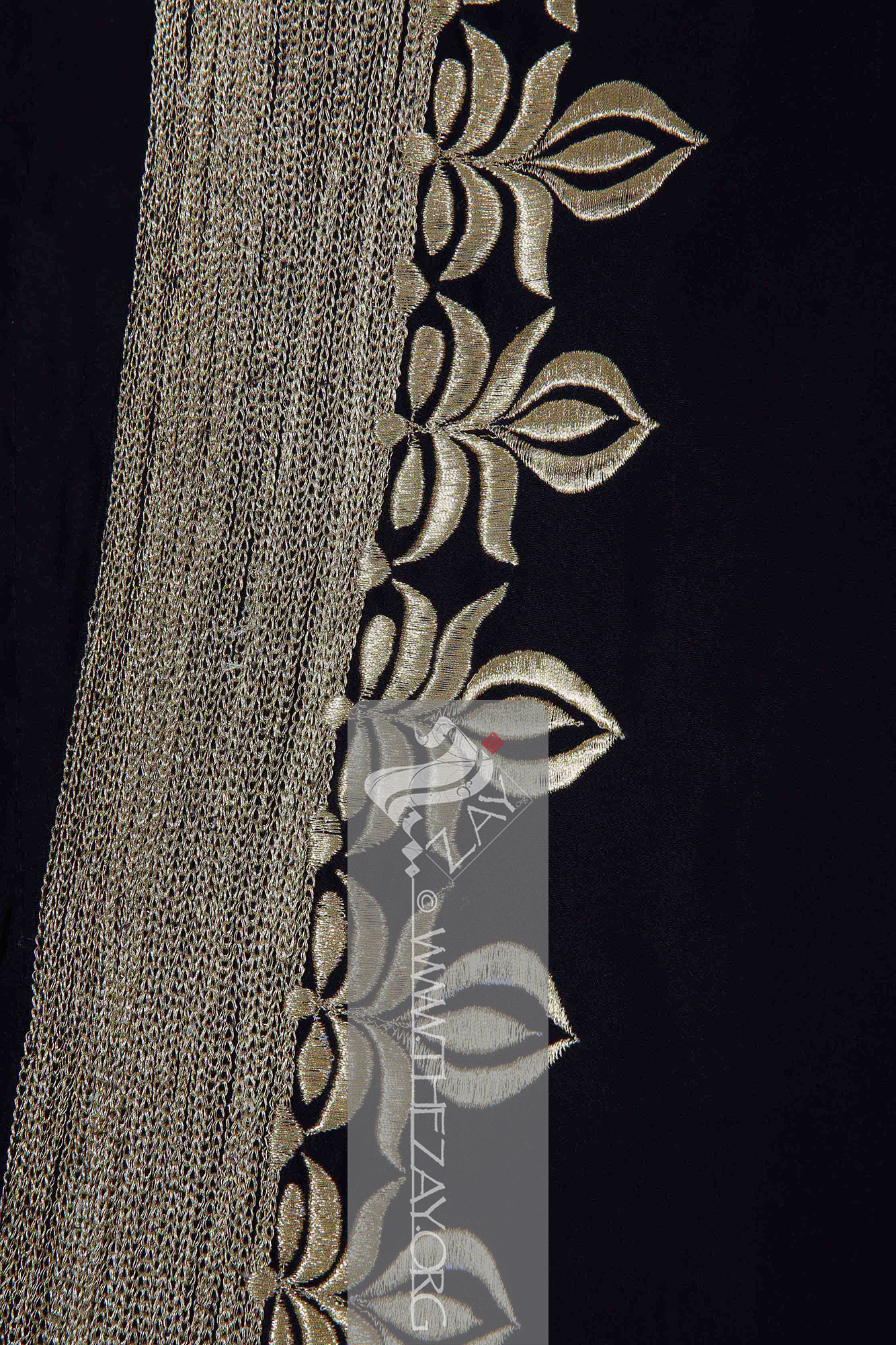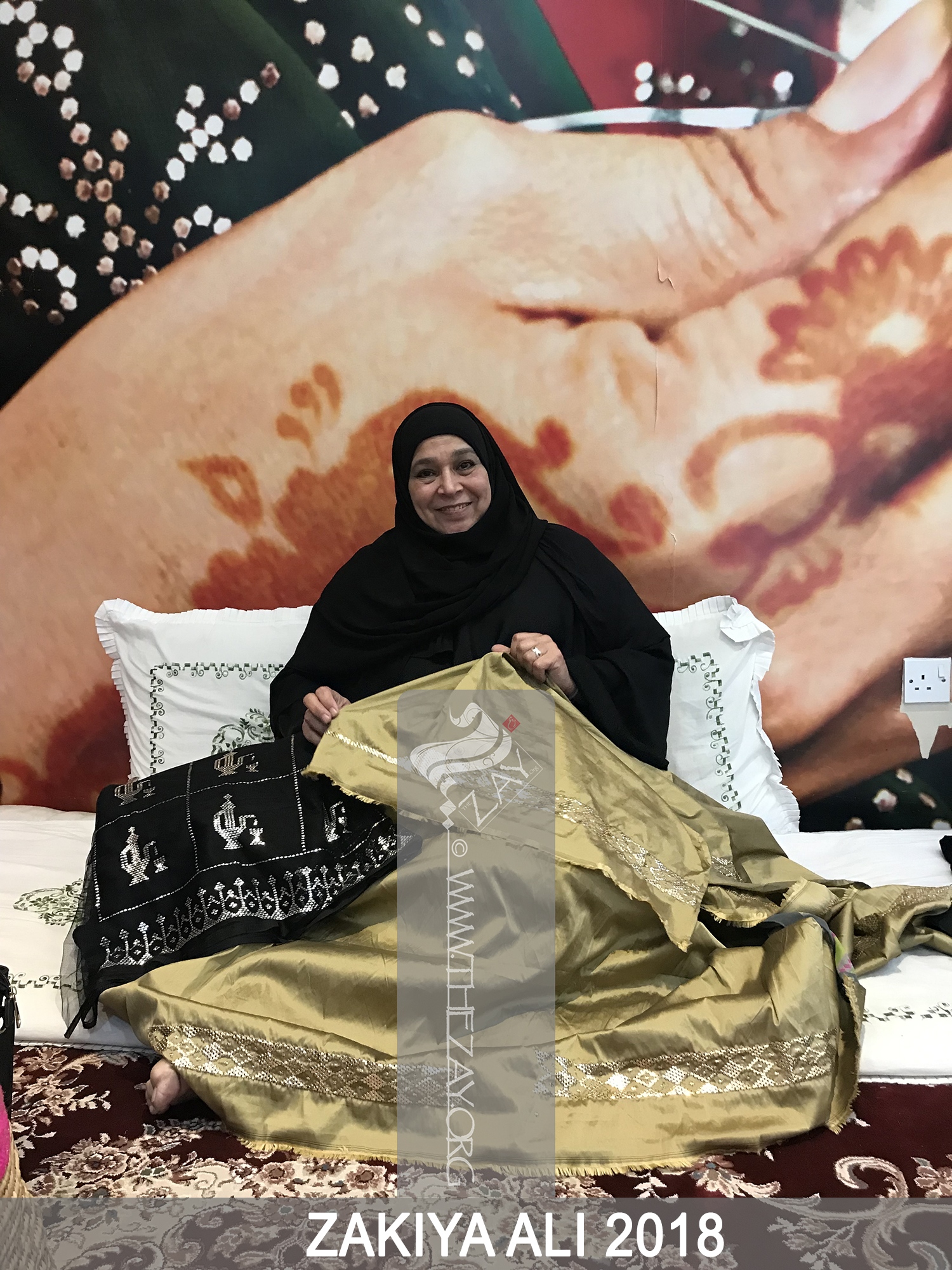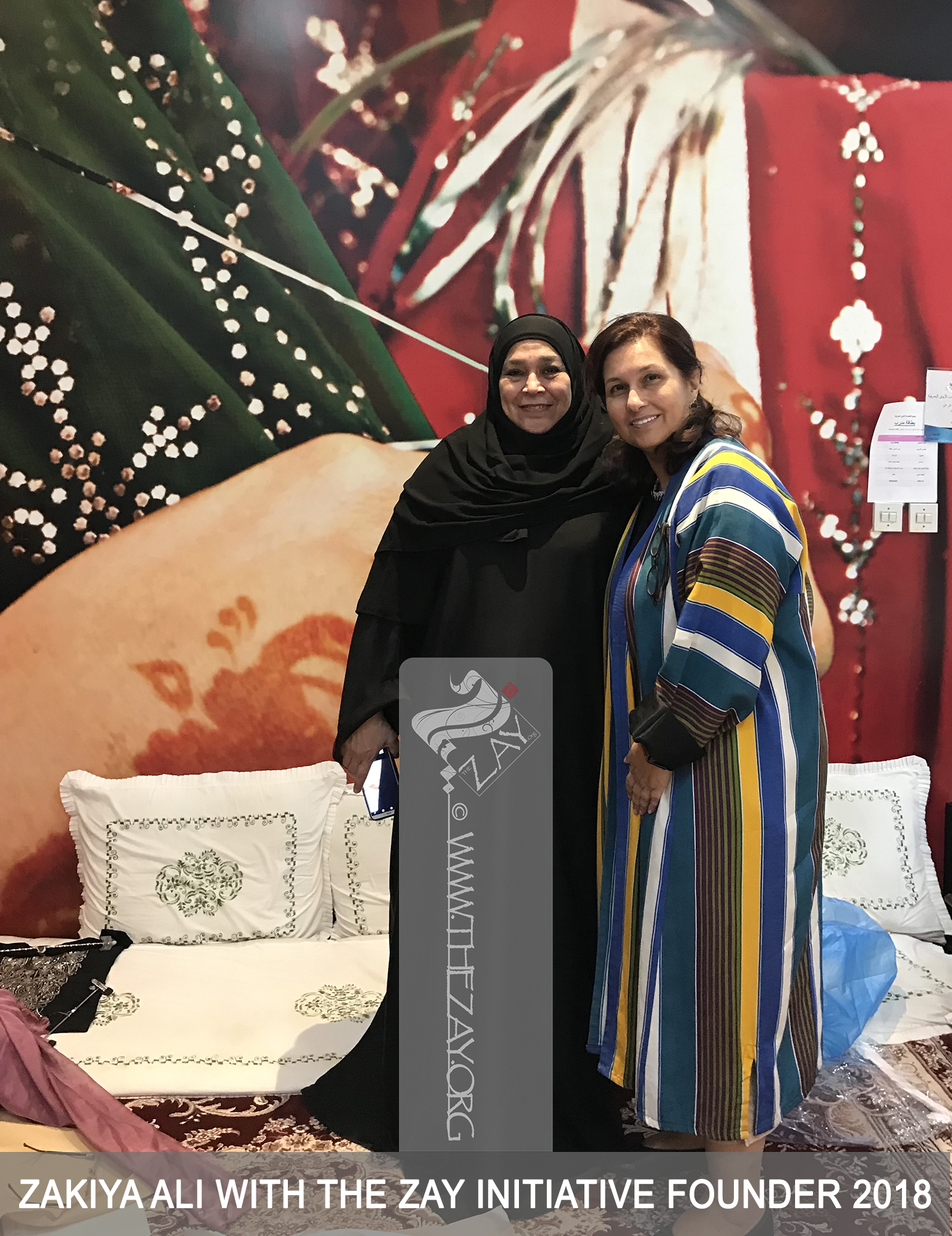[yotuwp type="videos" id="9oNEBE3I0Ns" ]
Object History On a visit to Bahrain in 2018,
Dr. Reem Tariq
Ṭariq: (Arabic; Synonym: tulle_bi_talli; talli; badla; khus_dozi ), series of small metal knots made on a woven net ground as embellishment. The term is commonly used in the Levant Arab region specifically in Lebanon.
El Mutwalli
Dr. Reem Tariq
Ṭariq: (Arabic; Synonym: tulle_bi_talli; talli; badla; khus_dozi ), series of small metal knots made on a woven net ground as embellishment. The term is commonly used in the Levant Arab region specifically in Lebanon.
el Mutwallī: Founder (CEO) of the Zay
Zay: (Arabic: costume, Pl. azyaā’), a set of clothes in a style typical of a particular country or historical period. Initiative, a public figure, speaker and author. An expert curator and consultant in Islamic art and architecture, interior design, historic costume, and UAE heritage., sought to find crafters talented in silver embroidery (
naqdah
Naqdah: (Arabic: coins, synonyms: mnaghadah, naghdah, mnaghadah) Since silver was a form of currency, it came to refer to silver adorned garments. The term refers to articles decorated with silver (tallī) straw (khūs) in small coin-like dots. The (qāf) is pronounced (gha) colloquially.). She was advised to meet with Zakiyah Ali, from then on, they became good friends and Zakiyah began to source old articles of dress to help build the Bahraini section of The
Zay
Zay: (Arabic: costume, Pl. azyaā’), a set of clothes in a style typical of a particular country or historical period. collection. Dr. El Mutwalli has also commissioned Zakiyah to create a sample of her work, one specifically to be added in Zakiyah’s name in due course.
This overgarment was handmade by the late Maryam Ali Nasser Al-Hayki, famous for her skills in sewing and craftsmanship. Zakiyah Ali, her daughter, inherited these skills from her mother and excelled especially in silver straw technique (
naqdah
Naqdah: (Arabic: coins, synonyms: mnaghadah, naghdah, mnaghadah) Since silver was a form of currency, it came to refer to silver adorned garments. The term refers to articles decorated with silver (tallī) straw (khūs) in small coin-like dots. The (qāf) is pronounced (gha) colloquially.). Thus, she is known as Zakiyah
Naqdah
Naqdah: (Arabic: coins, synonyms: mnaghadah, naghdah, mnaghadah) Since silver was a form of currency, it came to refer to silver adorned garments. The term refers to articles decorated with silver (tallī) straw (khūs) in small coin-like dots. The (qāf) is pronounced (gha) colloquially..
Object Features This black silk women’s cloak is distinguished by the machine embroidered pattern on each side of the central axis: in the shape of a fish, hence named (
um_smichah
Um_Smichah: (Arabic, um
‘Um: (Arabic: mother), a sign of respect or formality, women are not addressed by their own names, rather as mother of, then adding the name of the eldest son as in Um Mohammed. Also can mean: with, for example (‘um mishakhiṣ) meaning with gold embellishment.: mother, samakah: fish), referring to any fish motif, it also refers to a type of cloak (abayah
‘Abāyah: (Arabic: cloak, Pl. ‘abāyāt, or ‘Ibī. In Classical Arabic: ‘abā’ah, pl: ‘abā’āt, synonyms: ‘Abā, ‘abāh, ‘abāt, dafah
Daffah : (Arabic: side, synonyms: ‘Abā, ‘abāyah, ‘abāh, ‘abāt, bisht or mishlaḥ), long, wide, and sleeveless outer cloak worn in public by both sexes. In time this article of dress evolved and changed in shape, style, and function., bisht, or mishlaḥ), long, wide, and sleeveless outer cloak worn in public by both sexes. In time this article of dress evolved and changed in shape, style, and function.), common in Bahrain and Qatar.). It is reserved for special occasions and social gatherings.
Customarily, such a cloak is distinguished by a large arabesque cartouche embroidered on each side either at the shoulders or hip-line in geometric, arabesque, and floral patterns, creating an abstract stylised fish motif (see
ZI2018.50075 QATAR). However, in this example, the name is taken literally and the design depicted is an actual fish shape, illustrating naivety and lack of historical grasp by the client, tailor, and embroiderer.
All cloaks named (
abayah
‘Abāyah: (Arabic: cloak, Pl. ‘abāyāt, or ‘Ibī. In Classical Arabic: ‘abā’ah, pl: ‘abā’āt, synonyms: ‘Abā, ‘abāh, ‘abāt, dafah
Daffah : (Arabic: side, synonyms: ‘Abā, ‘abāyah, ‘abāh, ‘abāt, bisht or mishlaḥ), long, wide, and sleeveless outer cloak worn in public by both sexes. In time this article of dress evolved and changed in shape, style, and function., bisht, or mishlaḥ), long, wide, and sleeveless outer cloak worn in public by both sexes. In time this article of dress evolved and changed in shape, style, and function.), (
bisht
Bisht: (Arabic: bjd or bjād: cloak, Akkadian: bishtu or Persian: back, pl. bshūt synonyms: ‘Abā,‘abāyah, ‘abāh, ‘abāt, dafah
Daffah : (Arabic: side, synonyms: ‘Abā, ‘abāyah, ‘abāh, ‘abāt, bisht or mishlaḥ), long, wide, and sleeveless outer cloak worn in public by both sexes. In time this article of dress evolved and changed in shape, style, and function., or mishlaḥ), long, wide, and sleeveless outer cloak worn in public by men. In time this article of dress evolved and changed in shape, style, and function.), (
mishlah
Mishlaḥ: (Arabic: to take off, synonyms: ‘Abā, ‘abāyah, ‘abāh, ‘abāt, dafah
Daffah : (Arabic: side, synonyms: ‘Abā, ‘abāyah, ‘abāh, ‘abāt, bisht or mishlaḥ), long, wide, and sleeveless outer cloak worn in public by both sexes. In time this article of dress evolved and changed in shape, style, and function. or bisht), long, wide, and sleeveless outer cloak worn in public by men. In time this article of dress evolved and changed in shape, style, and function.), (
dafah
Daffah : (Arabic: side, synonyms: ‘Abā, ‘abāyah, ‘abāh, ‘abāt, bisht or mishlaḥ), long, wide, and sleeveless outer cloak worn in public by both sexes. In time this article of dress evolved and changed in shape, style, and function.), or (
abayat_ras
‘Abāyat_rās: (Arabic: ‘abāyah, ‘aba: outer cloak, rās: head), in most of the Arab Gulf region the term is used when an outer cloak (‘abāyah) is worn draped off the head.) are generally constructed from two rectangular pieces of fabric of equal length (
fajatayn
Fajatayn: (Arabic: fajah: strip between two mountains), two strips, bolts or lengths of fabric used to measure finished cloth.) sewn together horizontally.
The two outer edges of each length (
fajah
fajah: (Arabic: Fujah: gap between two mountains), denotes a single length of fabric.) are folded onto the middle and sewn at the top to create the shoulder line. In this fashion, the lengthwise folded sides (
fajatayn
Fajatayn: (Arabic: fajah: strip between two mountains), two strips, bolts or lengths of fabric used to measure finished cloth.) leave an opening in the middle, running the length of the front body region.
Two small holes are opened at the folded line, on the top corners of each shoulder line to allow the hands to pass through creating the sleeves without having to cut and add a sleeve, as in most clothes.
The
abayah
‘Abāyah: (Arabic: cloak, Pl. ‘abāyāt, or ‘Ibī. In Classical Arabic: ‘abā’ah, pl: ‘abā’āt, synonyms: ‘Abā, ‘abāh, ‘abāt, dafah
Daffah : (Arabic: side, synonyms: ‘Abā, ‘abāyah, ‘abāh, ‘abāt, bisht or mishlaḥ), long, wide, and sleeveless outer cloak worn in public by both sexes. In time this article of dress evolved and changed in shape, style, and function., bisht, or mishlaḥ), long, wide, and sleeveless outer cloak worn in public by both sexes. In time this article of dress evolved and changed in shape, style, and function. or
dafah
Daffah : (Arabic: side, synonyms: ‘Abā, ‘abāyah, ‘abāh, ‘abāt, bisht or mishlaḥ), long, wide, and sleeveless outer cloak worn in public by both sexes. In time this article of dress evolved and changed in shape, style, and function. – as it is more commonly called in Bahrain and Qatar – is usually embellished with gold or silver cords (
gitan
Gītān: (Arabic: qītān: cord or shoe-lace), comes in woven/braided colored silk or metallic thread, used in hemming or embroidery. The letter (qāf) is colloquially pronounced (ga).) to cover seams on shoulder lines down to the wrists, around the sleeve openings, and on the edges of the front longitudinal opening.
However, in this example, the above-mentioned lines are delineated with two mirrored machine embroidered bands, in a number of parallel chain-stitch lines, with one looped line creating the outer edge.
The frontal neckline is densely machine embroidered in vertical lines using chain-stitch, creating a 10 cm wide lapel (
darbawiyah
Darbawīyah: (Arabic: darb: path, Turkish: oya
Oyā: (Turkish), refers to various forms of narrow needle lace trimmings common to eastern and southern Mediterranean regions and parts of Armenia. Believed to be a derivative of Venetian lace it is considered an indelible part of the traditional craft of Türkiye today. : engraving, trimming or embroidery), a term used in the Arab Gulf region to identify the decorative adornment used on the formal cloak (bisht).), in gilded metallic thread (
zari
Zarī: (Persian two-syllables: zar: gold & dozi: embellishment), complex embroidery technique that uses metal alloy on silk, satin, or velvet, and may include pearls, beads, and precious stones. Colloquially in the Arab gulf region, the term (zarī) is loosely applied to any gilded thread, embellishment or gilded brocade fabric. Originated in ancient Persia it has been used extensively in Indian and Middle Eastern textiles for centuries. ). Followed by another outer 10 cm wide line in a repetitive leaf motif, in
satin
Sātin: (Arabic: Zaytuni: from Chinese port of Zayton in Quanzhou province where it was exported from and acquired by Arab merchants), one of the three basic types of woven fabric with a glossy top surface and a dull back. Originated in China and was fundamentally woven in silk. stitch. This lapel reaches down to the hip-line where the two mirrored fish motifs are embroidered on each side.
The same running embroidery motif applied to shoulder seams is repeated past the point of fish design and continues from the hip-line down the front to the bottom hem on each side.
Traditionally, the article is complemented by a pair of golden
zari
Zarī: (Persian two-syllables: zar: gold & dozi: embellishment), complex embroidery technique that uses metal alloy on silk, satin, or velvet, and may include pearls, beads, and precious stones. Colloquially in the Arab gulf region, the term (zarī) is loosely applied to any gilded thread, embellishment or gilded brocade fabric. Originated in ancient Persia it has been used extensively in Indian and Middle Eastern textiles for centuries. cords (
gitan
Gītān: (Arabic: qītān: cord or shoe-lace), comes in woven/braided colored silk or metallic thread, used in hemming or embroidery. The letter (qāf) is colloquially pronounced (ga).) known as (amayil), regularly interspaced with a number of gilded thread (
zari
Zarī: (Persian two-syllables: zar: gold & dozi: embellishment), complex embroidery technique that uses metal alloy on silk, satin, or velvet, and may include pearls, beads, and precious stones. Colloquially in the Arab gulf region, the term (zarī) is loosely applied to any gilded thread, embellishment or gilded brocade fabric. Originated in ancient Persia it has been used extensively in Indian and Middle Eastern textiles for centuries. ) balls ending, at times, with tassels (tarbushah). Occasionally, these are quite largely exaggerated and very prominent, at times they are made of gold with precious stones substituting for the thread balls. In this example, we have just one
zari
Zarī: (Persian two-syllables: zar: gold & dozi: embellishment), complex embroidery technique that uses metal alloy on silk, satin, or velvet, and may include pearls, beads, and precious stones. Colloquially in the Arab gulf region, the term (zarī) is loosely applied to any gilded thread, embellishment or gilded brocade fabric. Originated in ancient Persia it has been used extensively in Indian and Middle Eastern textiles for centuries. ball on each side ending with a simple knot of looped cord (
gitan
Gītān: (Arabic: qītān: cord or shoe-lace), comes in woven/braided colored silk or metallic thread, used in hemming or embroidery. The letter (qāf) is colloquially pronounced (ga).). These are mainly decorative and help fasten the cloak.
The upper back area on this cloak is elaborately machine embroidered in the same
satin
Sātin: (Arabic: Zaytuni: from Chinese port of Zayton in Quanzhou province where it was exported from and acquired by Arab merchants), one of the three basic types of woven fabric with a glossy top surface and a dull back. Originated in China and was fundamentally woven in silk. stitch gold colour metallic thread
zari
Zarī: (Persian two-syllables: zar: gold & dozi: embellishment), complex embroidery technique that uses metal alloy on silk, satin, or velvet, and may include pearls, beads, and precious stones. Colloquially in the Arab gulf region, the term (zarī) is loosely applied to any gilded thread, embellishment or gilded brocade fabric. Originated in ancient Persia it has been used extensively in Indian and Middle Eastern textiles for centuries. . The design starts with two large mirrored
paisley
Paisley: (Scottish Gaelic, Pàislig: a town in Scotland), often called buta
Būta: (Anglicized Persian: boteh – Pinecone shaped motif), known as paisley in English it is the almond or pinecone-shaped motif, especially in textiles. It is believed to have originated from the Cyprus tree a Zoroastrian symbol for life and eternity. In the current Indian context, however, it simply means motif., boteh, amli, or kalgi in the subcontinent and kazuwah in Arabic, is a Persian tear drop motif with a curved end specially in textiles. Its popularity and subsequent local production in 18th century at Paisley are responsible for its nomenclature. (kazuwah) motifs, surrounded by a garland of leaves, followed by a line that resembles a string of beads creating one half of an oval shape. From this central oval shape, lines resembling sun rays emanate starting with an almond shape, followed by a flower, then a number of leaves, extending across the entire back area reaching the waistline at the center axis.




